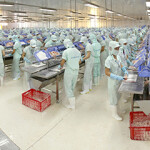EUMOFA: Europeans continuing to eat seafood despite inflationary pressures

The E.U. held on to its position as the world’s third-largest seafood seafood-buying market in volume terms in 2022 behind China and Indonesia, as the bloc received close to 11.6 million metric tons (MT) of fisheries and aquaculture products.
Presented as part of an annual study from the European Market Observatory for Fisheries and Aquaculture Products (EUMOFA), the total marks an increase compared to recent years, despite inflationary pressures facing many European nations.
The study, “The EU Fish Market – 2023 Edition,” found the E.U.’s 2022 per capita consumption of 24.55 kilograms makes it the 12th-highest-ranked consumption market in the world, but the analysis also noted the rising price of fish – up 10 percent between 2021 and 2022 – is affecting these trends.
E.U. household expenditures on seafood products reached EUR 62.9 billion (USD 68.9 billion) in 2022, representing an 11 percent increase on 2021, and accelerating a trend that began in 2018. As a result, at-home fish consumption volumes fell nearly 17 percent in the highest-consuming E.U. countries in 2022.
By comparison, E.U. households spent EUR 244 billion (USD 267.3 billion) on meat products in 2022, even though fish prices increased less than the prices of meat (11.6 percent) and food in general (12 percent) last year.
In the report’s foreword, E.U. Commissioner for Environment, Oceans, and Fisheries Virginijus Sinkevičius wrote that imports have been important to Europe because the continent’s seafood industry has faced a succession of crises in recent years, ranging from the Covid-19 pandemic to the ongoing war in Ukraine.
“The impact of these crises was often severe, particularly affecting energy and production costs and, ultimately, inflation,” he said. “But, despite these challenges, the E.U. remains a leading global player.”
According to Sinkevičius, a major strength of the continent’s industry is that the region’s producers and processors can draw on centuries of tradition and lessons learned through open collaboration.
“This knowledge, combined with innovative thinking and the sustainable management of our resources, allows [European producers] to supply the market with a wide variety of products of the highest quality,” he said. “At the same time, however, our appetite for seafood makes us also extremely dependent on imports from non-E.U. countries. This is especially the case with salmon, cod, and shrimp.”
The bloc’s 2022 imports increased …
Photo courtesy of





Share